Notes For All Chapters Biology Class 12 CBSE
Mendel’s Laws of Inheritance:
1. Genetics is the branch of biology, which deals with inheritance and variation of characters from parents to offspring.
2. Inheritance is the process by which characters or traits are transferred from one generation to the next.
3. Variation is the degree by which progeny differs from each other and with their parents. Humans knew from as early as 8000-1000 BC, that one of the causes of variation was hidden in sexual reproduction.
4. Gregor Johann Mendel, for the first time conducted experiments to understand the pattern of inheritance of variation in living beings.
5. Mendel’s Experimental Material
(i) He conducted experiments on garden pea plant (Pisum sativum) for seven years (1856-1863) and proposed the laws of inheritance in living organisms.
(ii) He selected garden pea plant as a sample for experiment because of:
(a) Easy availability on a large scale.
(b) Many varieties are available with distinct characteristics.
(c) They are self-pollinated and can be cross-pollinated easily in case self-pollination does not occur.
(iii) Mendel selected 14 true-breeding (a breeding line which has undergone continuous self-pollination shows stable trait inheritance and expression for several generations) pea plant varieties, as pairs, which were similar except for one character with contrasting traits.
Seven contrasting characters and their traits as taken by Mendel are listed in the table given below:
6. Mendel’s Experimental Procedure
(i) He observed one trait or character at a time. For example, he crossed tall and dwarf pea plants to study the inheritance of one gene.
(ii) Mendel hybridised plants with alternate forms of a single trait (monohybrid cross). The seeds produced by these crosses were grown to develop into plants of Filial1 progeny or F1-generation.
(iii) He then self-pollinated the tall F1 plants to produce plants of Filial2 progeny or F2-generation.
(iv) In later experiments, Mendel also crossed pea plants with two contrasting characters known as dihybrid cross.
(v) Mendel self-pollinated the F2 plants also.
7. Mendel’s Observation in his Experiment
(i) In Frgeneration, Mendel found that all pea plants were tall and none were dwarf.
(ii) He also observed other pair of traits and found that F1 always resembled either one of its parents and the traits of the other parent was not found in them.
(iii) In F2-generation, he found that some of the off springs were dwarf, i.e. the character which were not seen in F1-generation were expressed in F2-generation.
(iv) These contrasting traits (tall/dwarf) did not show any mixing either in F1 or in F2-generation.
(v) Similar results were obtained with the other traits that he studied. Only one of the parental traits was expressed in F1-generation, while at F2-generation stage, both the traits were expressed in the ratio of 3:1.
(vi) Mendel also found identical results in dihybrid cross as in monohybrid cross.
(vii) On self-pollinating F2 plants, he found that dwarf F2 plants continued to generate dwarf plants in F3 and F4-generations.
8. Inferences of Mendel’s Experiments
(i) Mendel inferred that something was being passed down, from parents to offspring through the gamete over successive generations. He called them ‘factors’, now known as genes.
(ii) Genes are the unit of inheritance. They contain the information required to express a trait.
(iii) Genes which codes for a pair of contrasting traits are called alleles or allelomorphs, i.e. they are slightly different forms of the same gene.
(iv) Mendel also proposed that in a true breeding variety, the allelic pair of genes are identical or homozygous, TT and tt for tall or dwarf pea variety respectively.
(v) TT and tt are genotype of the plant.
(vi) Descriptive term tall and dwarf are the phenotype.
(vii) When the tall (TT) and dwarf (tt) pea plant produce gametes, the alleles of the parental pair segregate from each other and only one allele is transmittted to a gamete.
(viii) The gametes of the tall TT plants have the allele T and the dwarf tt plants have the allele t.
(ix) This segregation of alleles is a random process and, so there is a 50% chance of a gamete containing either allele, as verified by the results of crossings. After fertilisation of TT and tt traits, hybrids contain Tt and are called heterozygous.
(x) Mendel found the phenotype of Tt to be similar as TT parent in appearance, he proposed that in a pair of dissimilar factor, one dominates the other (T in this case) and hence, is called the dominant factor, while the other factor (t) is recessive.
(xi) Allele can be similar in case of homozygous TT or tt and dissimilar in case of heterozygous Tt.
(xii) In Tt plant, one character (height) is controlled by a gene hence, it is monohybrid and cross between TT and tt is called monohybrid cross.
9.
10. Mendel’s law of inheritance are based on his observations on monohybrid and dihybrid crosses, he proposed three laws:
(i) Law of dominance (first law) States that characters are controlled by genes which occur in pair, when two alternate forms of a trait or character (genes or alleles) are present in an organism, only one factor (dominant) expresses itself in F1-generation. While, the other factor (recessive) remains hidden. It explains expression of genes in a cross and 3:1 ratio obtained in the F2-generation.
(ii) Law of segregation (second law) States that the factors or alleles of a pair segregate from each other during gamete formation, in a way that a gamete receives only one of the two factors. They do not show any blending.
(iii) Law of independent assortment (third law) It is based on inheritance of two genes, i.e. dihybrid cross which states that when two pairs of contrasting traits are combined in a hybrid, segregation of one pair of characters is independent of the other pair of characters. These factors randomly rearrange in the offsprings producing both parental and new combination of characters. The Punnett square can be used to understand the independent during meiosis.
11. Incomplete dominance is a phenomenon in which the F: – hybrid shows characters intermediate of the parental genes. In this process, the phenotypic ratio of F2-generation deviates from the Mendel’s monohybrid ratio.
Example, inheritance of flower colour in the dog flower (snapdragon or Antirrhinum sp) and four O’ clock plant (Mirabilis jalapa).
In a cross between red flower (RR) and white flower plant (rr), the F1 (Rr) was pink (in figure). When F1 was self-pollinated, the F2 resulted in the ratio 1: 2: L
12. Codominance is a phenomenon in which two alleles are able to express themselves independently when present together. These alleles are called codominant alleles.
The offsprings show resemblance to both the parents.
(i) A common example of codominance is ABO blood groups in humans.
(ii) The gene for blood group exist in three allelic forms IA , IB and i.
(iii) IA and IB produce RBC surface antigens A and B, respectively, whereas ‘i’ does not produce any antigen.
(iv) IA and IB both are dominant alleles, whereas T is the recessive allele.
(v) In case IA and IB are present together, both express equally and produce both the surface antigens A and B.
13. Multiple allelism It can also be explained by ABO blood grouping. In this case, more than two, i.e. three alleles are governing the same character. Multiple alleles can be found only when population studies are made since, an individual can have only two alleles.
14. Test cross It is a method devised by Mendel to determine the genotype of an organism. A cross is made of unknown dominant genotype with the recessive parent.
(i) For example, Fj hybrid (Tt) heterozygous of a pure tall plant (TT) and a pure dwarf plant (tt) is crossed with a pure dwarf plant.
In this example, the progeny consists of tall and dwarf plants in the ratio 1:1. Thus, monohybrid test cross ratio is 1:1.
(ii) In case of both homozygous parents, i.e. TT, the progeny obtained will have to tall plants. (Tall)
(iii) In case of dihybrid test cross, where two traits are taken, a heterozygous individual is crossed with a homozygous recessive parent.
15. Pleiotropy It is the phenomenon in which a single gene exhibits multiple phenotypic expressions. A single pleiotropic gene may produce more than one effect.
For example,
(i) Phenylketonuria, a disorder caused by mutation in the gene coding the enzyme phenylalanine hydroxylase. The affected individuals show hair and skin pigmentation and mental problems.
(ii) Starch synthesis in pea seeds is controlled by one gene with two alleles (B and b).
(a) Starch is synthesised effectively by the homozygotes, BB and hence, the starch grains are large and the seeds at maturity are round.
(b) The homozygotes, bb are less efficient in starch synthesis, hence they have small starch grains and the seeds are wrinkled.
(c) The heterozygotes, Bb produce round seeds, indicating that B is the dominant allele, but the starch grains are intermediate in size and hence, for the starch grain size, the alleles show incomplete dominance.
(d) It is an example of pleiotropy as the same gene controls two traits, i.e. seed shape and size of starch grains.
(e) Here, it is to be mentioned that dominance is not an autonomous feature of the gene or its product, but it depends on the production of a particular phenotype from the gene product.
16. Polygenic inheritance was given by Galton in 1833. In this, traits are controlled by three or more genes (multiple genes). These traits are called polygenic traits. The phenotype shows participation of each allele and is also influenced by the environment and is called quantitative inheritance as the character/phenotype can be quantified.
For example, human skin colour which is caused by a pigment melanin. The quantity of melanin is due to three pairs of polygenes (A, B and C). If it is black or very dark (AA BB CC) and white or very light (aa bb cc) individuals marry each other, the offspring shows intermediate colour often called mulatto (Aa Bb Cc). A total of eight allele combinations is possible in the gametes forming 27 distinct genotypes.
17. Complementary genes Complement the effect of each other to produce a phenotype. For example, in case of sweet pea, the flower colour is due to complementary genes. Here, one gene complements the expression of another gene.
18. Rediscovery of Mendel’s Laws
(i) Though, Mendel published his work on inheritance of characters in 1865, it remained unrecognised for several reasons till 1900. Some of them are as follow:
(a) Communication was difficult, so his work could not be widely publicised.
(b) His concept of genes as stable unit that controlled the expression of traits and of the pair of alleles which did not blend was not accepted.
(c) His approach of using mathematics to explain biological phenomenon was new and unacceptable.
(d) He could not provide any physical proof for the existence of factors.
(ii) In 1900, de Vries, Correns and Von Tschermak rediscovered Mendel’s results independently. Due to microscopy, they carefully observed cell division.
(iii) This led to discovery of chromosomes (structure in the nucleus that appeared to double and divide just before each cell division).
19. Chromosomal theory of inheritance was proposed independently by Walter Sutton and Theodore Boveri in 1902. They united the knowledge of chromosomal segregation with Mendelian principles and called it chromosomal theory of inheritance.
The main points are as follow:
(i) Gametes (sperm and egg) transmit hereditary characters from one generation to another.
(ii) Nucleus is the site of hereditary characters.
(iii) Chromosomes as well as genes are found in pairs.
(iv) The two alleles of a gene pair are located on homologous sites on the homologous chromosomes.
(u) The sperm and egg having haploid sets of chromosomes fuse to regain the diploid state.
(vi) Homologous chromosomes synapse during meiosis and get separated to pass into different cells and is the basis of segregation and independent assortment during meiosis.
20. Experimental verification of the chromosomal theory of inheritance was done by Thomas Hunt Morgan and his colleagues.
(i) Morgan selected fruit fly, Drosophila melanogaster for his experiments because:
(a) They could be grown on simple artificial medium in the laboratory.
(b) Their life cycle is only about two weeks.
(c) A single mating could produce a large number of flies.
(d) There was a clear differentiation of the sexes, i.e. male (smaller) and female (bigger).
(e) It has many types of hereditary variation that can be easily seen through low power microscopes.
(ii) Linkage and Recombination
(a) The physical association of two genes on a chromosome is called linkage.
(b) Recombination explains the generation of non-parental gene combinations.
(c) To explain the phenomena of linkage and recombination, Morgan carried out several dihybrid crosses in Drosophila to study genes that were sex-linked, i.e. the genes are located on X-chromosome. He observed that two genes did not segregate independently of each other.
(d) He observed that the proportion of parental gene combinations were much higher than the non-parental type, when two genes in a dihybrid cross were situated on the same chromosome. Morgan concluded this as a physical association or linkage.
(e) Morgan and his group also found that even when genes were grouped on the same chromosome, some genes were very tightly linked (very low recombination), while others were loosely linked (higher recombination).
(f) Recombination of linked genes is by crossing over (exchange of corresponding parts between the chromatids of homologous chromosomes).
Linkage results of two dihybrid crosses conducted by Morgan. Cross ‘A’ shows
crossing between genes y and w. Cross ‘B1 shows crossing between genes w and m. Here, dominant wild type alleles are represented with (+) sign.
(g) Alfred Sturtevant (Morgan’s student) used the frequency of recombination between gene pairs on the same chromosome as a measure of the distance between genes and ‘mapped’ their position on the chromosome. Genetic maps are now used as a starting point in the sequencing of whole genomes as done in case of Human Genome Sequencing Project.
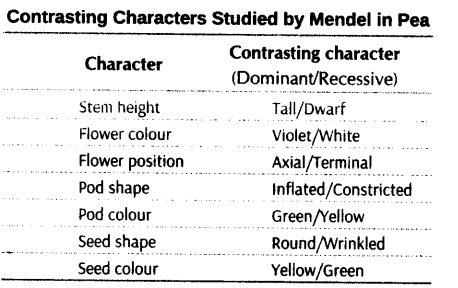
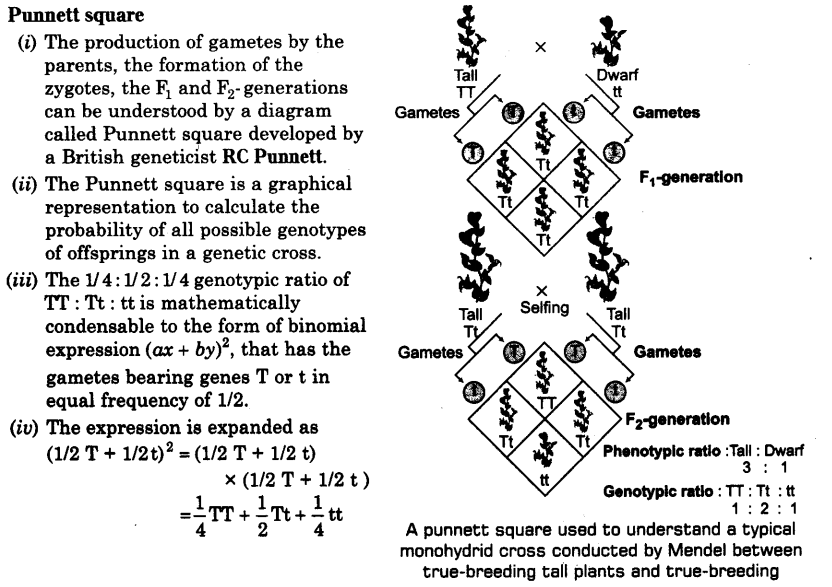
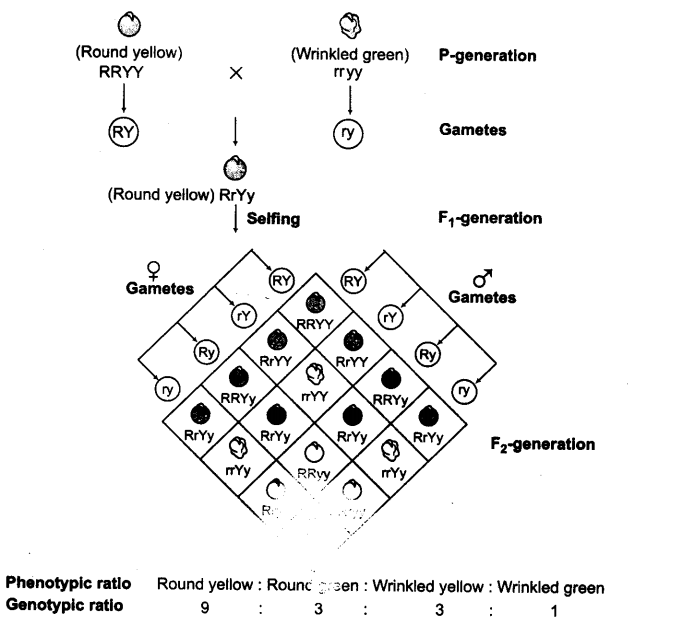
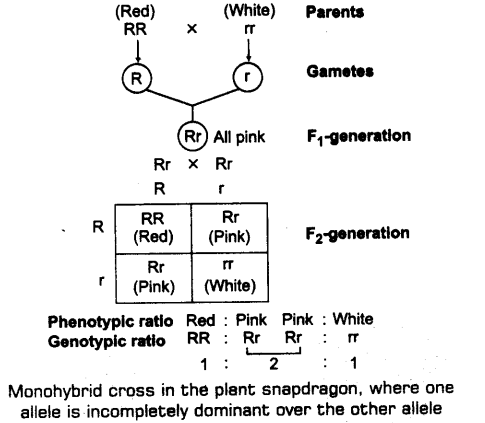
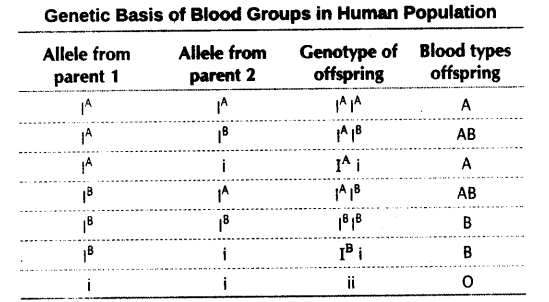
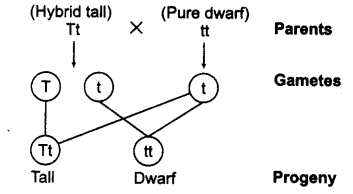
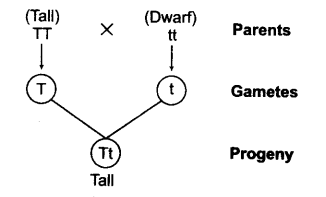
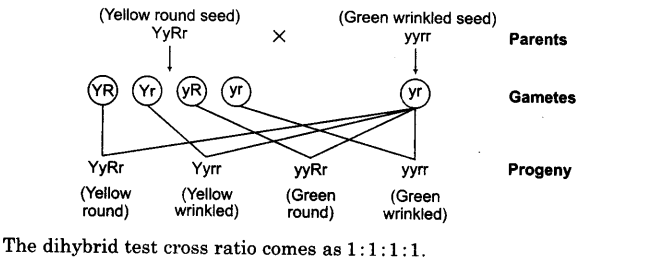
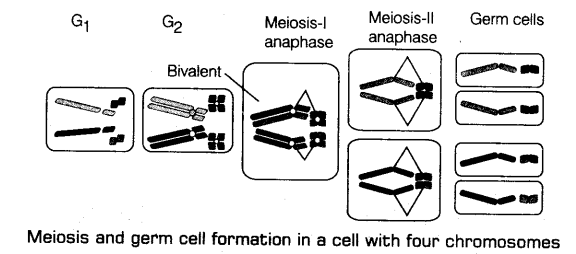
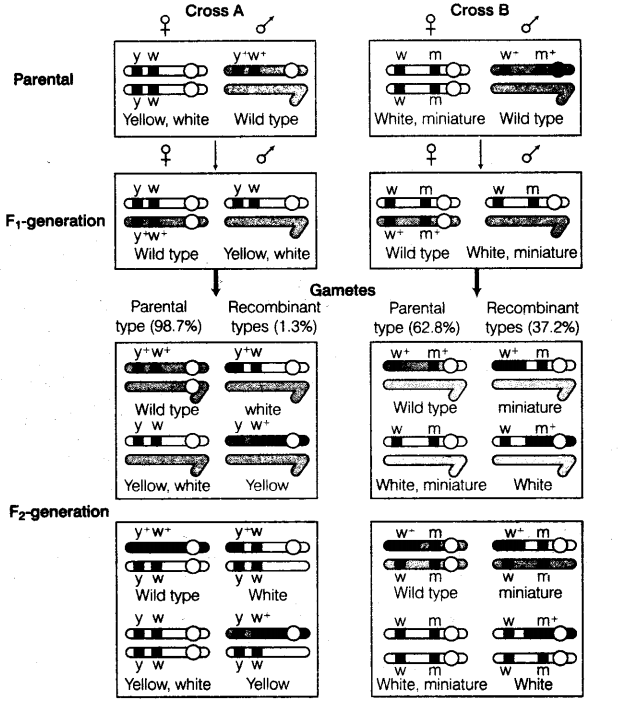
Leave a Reply